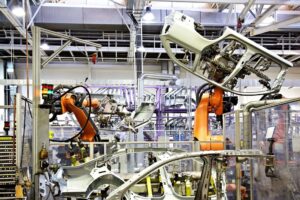Whether you are into metal fabrication or churn out automobile parts or manufacture high quality aerospace components, you need a comprehensive ERP software that manages your end-to-end operations and provides real-time visibility. ERP systems have come a long way from being legacy ERP software that a wide-range of manufacturers were using previously.
Now, they are no longer in picture considering the diverse needs of a modern manufacturing enterprise that needs a modern ERP software. However, even if they have opted for a comprehensive, modern ERP system, chances are that they will outgrow it very soon and not even realize it. Let us look at some symptoms that highlight this.
Signs that you have outgrown your ERP system
Workflows and Processes take longer
As manufacturers, you opt for an ERP software to automate manufacturing workflows and streamline business processes resulting in more operational efficiency, cost reduction and improved profitability. However, when things start to slow down and personnel resort to more manual methods (spreadsheets, notebooks, paper forms etc.) just like they used to in pre-ERP era, then it is a sign that you have outgrown your ERP software.
For example, the absence of real-time updates lead to personnel spending more time on retrieving the information from other departments through phone calls and noting it down on paper. Also, they would need to depend on IT personnel to extract data from the ERP system and then use spreadsheets to analyze it.
Modern ERP systems support mobility features (mobile ERP, wireless barcode scanners & label printers) to a great extent, enabling personnel to access the ERP and enter/consume critical information at every manufacturing stage. This cuts down production and processing time considerably and improves operational efficiency.
However, the lack of such a feature means personnel have to work through a workaround.
Customer Complaints have Increased
Customers need time to time updates on their order, shipment, invoice etc. Manufacturers have to ensure that these details are instantly accessible to them whenever customers call. If this isn’t easily accessible within your existing ERP system, customers lose patience as you have made them wait for the most basic information. They would definitely expect you to upgrade to a more modern system that provides customer info at the click of a button, when they have real-time systems themselves.
Modern ERP software have portals that can be accessed by customers for order updates, progress, invoice details, shipment details, shipping status, warranty information, returns information, compliance data and more.
Internal Teams and Departments struggle to operate efficiently
Most of the operational and production delays occur when departments fail to communicate real-time information with each other. This happens if the existing ERP software isn’t equipped to handle end-to-end manufacturing processes and the organization resorts to manual methods. Shop floor personnel aren’t aware of new Work Orders and therefore do not plan for it in their production planning. Lack of inventory level visibility leads to total chaos as sales team accept more sales orders and pass it on to the shop floor who cannot work on it due to under-stocking leading to delays. Sales forecasts are based on wrong or incomplete information. Customer support is non-efficient as it takes time to retrieve critical information.
There is total chaos as departments struggle to reconcile information with each other and find the missing ones. In the melee, customers suffer as there is no concrete information on their orders and shipment.
Integration is a Pain
Internet of Things (IoT), Machine Monitoring, and Artificial Intelligence (AI), Robotics, Big Data Analytics, rule the manufacturing world today. All manufacturing systems can be integrated with each other enabling real-time visibility of each processes to every personnel in the organization.
Enterprises today expect ERP systems to seamlessly integrate with third party applications, and internal applications, modules etc.
However, if you struggle to integrate external applications by resorting to expensive customizations, buying more integration tools, spending more time and money on migrating data from one system to the other, then it is an indication. Integration becomes a huge burden when things do not go as per the plan, and you end up patching more and more applications to make the integration run smoothly. Workarounds become more and personnel end up spending more time to achieve a certain objective that can be achieved easily with the help of a modern ERP.
Compliance Issues Increase
Every manufacturer needs to comply with certain industry compliance standards and an ERP plays a major role in ensuring 100% compliance through documentation and advanced quality management module.
However, with an old, legacy ERP software, you face a ton of issues in complying with those quality standards. With a clear lack of visibility over inventory levels, supply chain management, production processes, things can go unseen that can become a big problem later. Product recall instances are more as quality checks during material sourcing are poorly and manually documented. There is no central document repository that can store quality documentation, recall history, standard operating procedures etc. This can lead to information being stored in various forms and misplaced easily. Product quality suffers and compliance levels come down drastically.
Also, audit results take a hit, if the data is not managed in a centralized repository. Sifting through huge data blocks consume both time and energy in the absence of a proper data management system.
Needs an IT team to Manage it
If your ERP software needs a fleet of IT admins to manage it, then you need to change it at the earliest. Of course, you cannot spend so much personnel time and money on managing the nitty-gritties of ERP software management.
IT teams are meant to manage and ensure uptime of server, network resources, workspace consoles, personnel computers etc. apart from managing the ERP software and its updates. However, if they are constantly on the move to install new features, customize certain modules or integrate the ERP with other applications, then it is time to embrace a modern ERP.
More Maintenance Spends
Annual Maintenance Contracts (AMC) exist between the ERP vendor and the manufacturer. However, you end up spending more on maintaining the ERP software (apart from the AMC costs) if your ERP is based on an old technology and isn’t compatible with newer ones. The ERP vendor also struggles to let the ERP afloat for your enterprise, thereby consuming more resources, time and money.
Conclusion
Having an ERP software manage your enterprise isn’t the only consolation. The ERP should factor in your enterprise’s growth and expansion to a great extent and shouldn’t become a bottleneck. Modern ERP systems are now made more intuitive to the demands of manufacturing enterprises. They automate end to end manufacturing processes and can be easily integrated with a variety of manufacturing technology. Enterprises should treat these modern systems as an investment and not a liability.







5 Responses
Just exploring your services
Non ut quae sit expedita adipisicing minima amet facilis possimus et quae nihil
Omnis deserunt ullam exercitationem temporibus
Voluptas quam Nam quis omnis eveniet voluptatem Doloribus dolore doloremque facilis voluptatem Quis veniam labore accusamus et
Corporis dolorem exercitationem quia neque obcaecati quo sed autem dolor